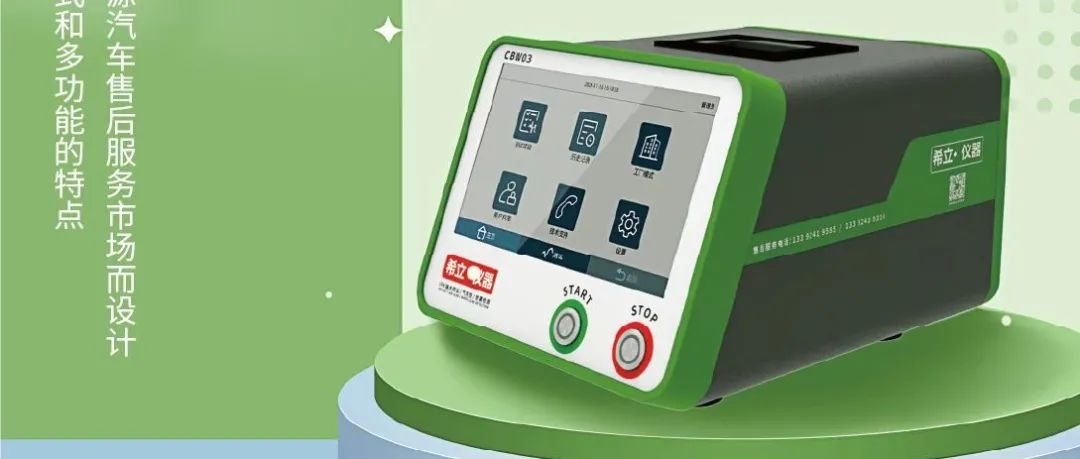Author: Zhu Yulong
In recent years, the new energy industry has developed rapidly. As of the end of September, the total number of new energy vehicles in China has reached 11.49 million, accounting for 3.65% of the total number of vehicles. Among them, the total number of electric vehicles is 9.26 million, accounting for 80.56% of the total number of new energy vehicles.
As the core component of electric vehicles, the battery system of new energy vehicles directly determines the usability of the vehicle. The basic protection of this component is mainly determined by its sealing performance.
The sealing performance directly affects the safety of the entire vehicle. The protection level of the battery box must meet the design requirement of no less than IP67 to ensure its waterproof sealing and prevent short-circuit accidents caused by water ingress. All battery components, including battery cells, modules, water cooling systems, and packs, must ensure their sealing performance to avoid inconvenience to customers or even catastrophic failures. Therefore, as the usage time of electric vehicles increases, maintenance of the battery system and checking its airtightness after 3 years become important issues.
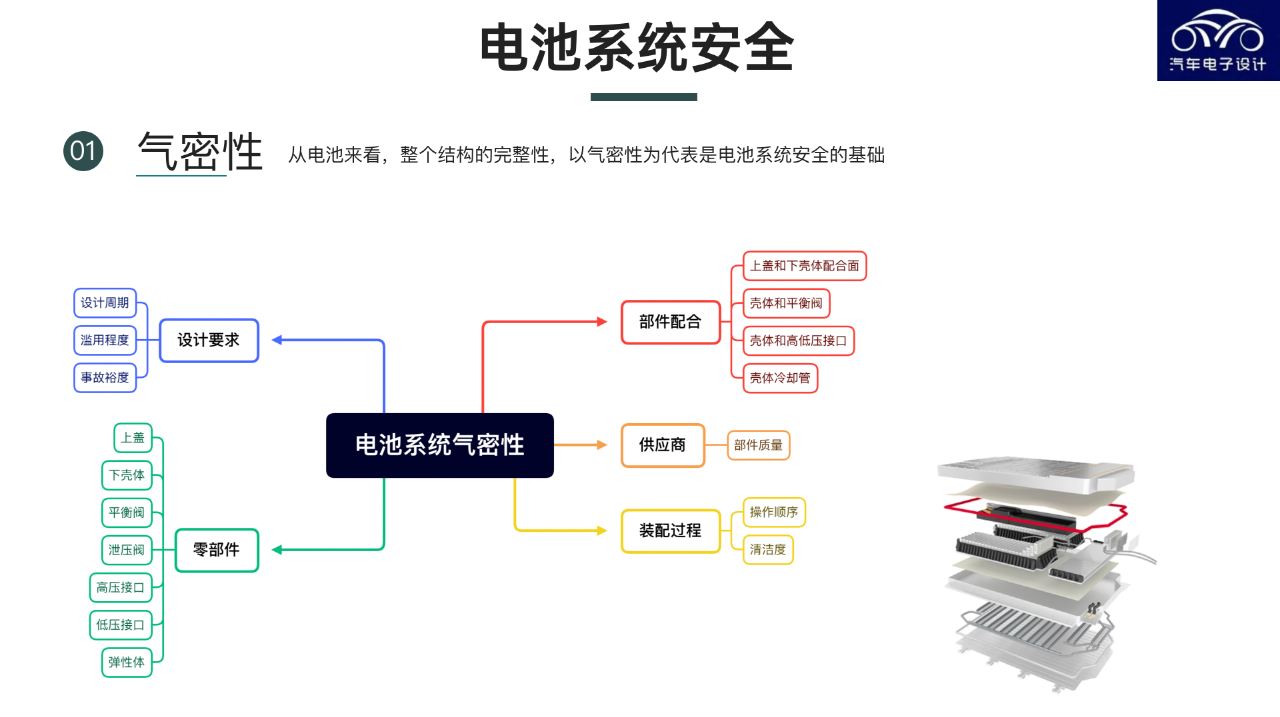
The Problem of Airtightness Failure
Prior to this, the safety of new energy vehicles has been popularized in China, and the promotion of the IP67 sealing requirement of the new energy battery system has ensured the basic safety of new energy vehicle battery systems. Under several rounds of requirements, such as the “Notice on Carrying out Special Check on Safety Hazards of New Energy Passenger Cars and Commercial Vehicles”, high-intensity running vehicles like taxis and ride-hailing vehicles need to be inspected.
Most airtightness testing programs are based on battery systems.The main method is to use a gas pressurization system that connects the product and the tester using quick connectors, and then fills the tested component with gas. After the gas pressure stabilizes, the internal pressure variation of the product is detected over time. The pressure drop ΔP is measured based on time Δt. If the pressure drops quickly, it indicates the existence of a large leakage source. If the pressure drops slowly, there are small leaks. If the pressure remains the same, there is no leakage. The leakage rate Q can be easily calculated by considering the volume V of the component. That is: Q = (∆p* V) / ∆t.
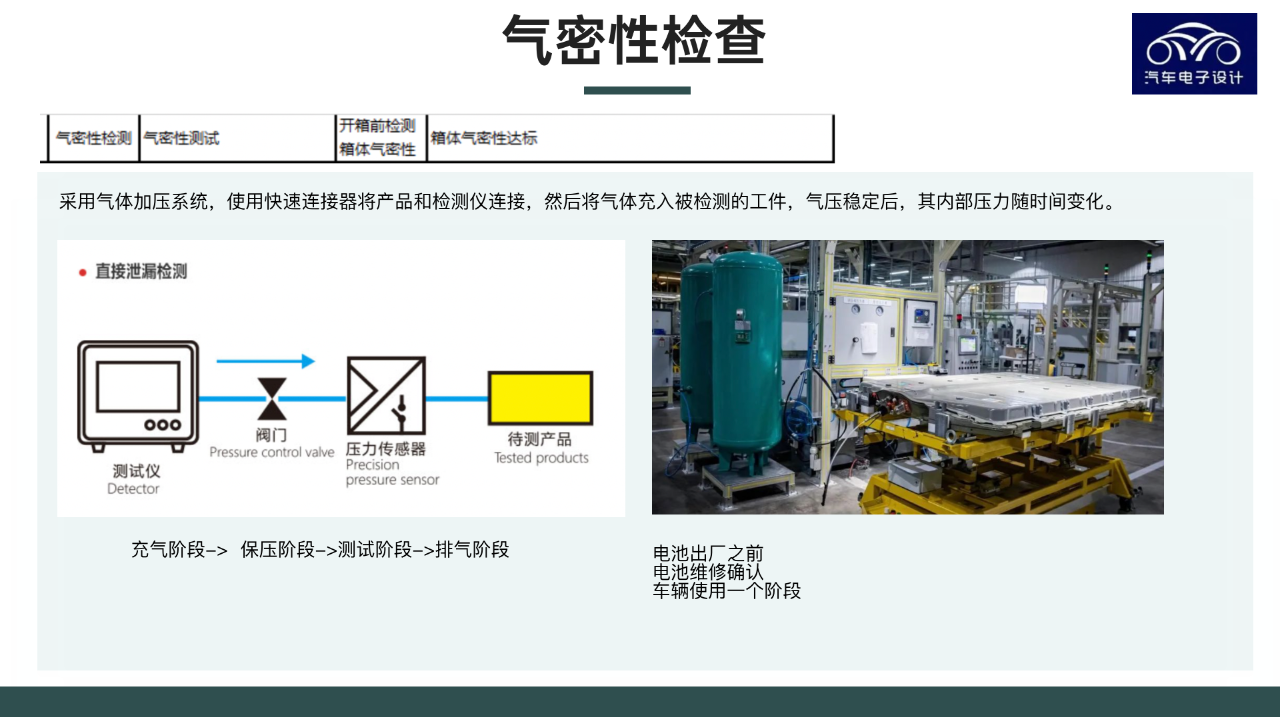
In fact, the main cause of airtightness problems is the damage of the shell – if the sealing adhesive between the upper cover and the lower shell is cracked, it can cause poor sealing and result in the infiltration of external liquids, leading to water ingress in the battery. Once the insulation is damaged, it affects the entire battery system, especially for battery systems like CTP that are difficult to repair.
Therefore, in engineering design, we need to pay attention to the design of the bottom airtightness safety of the battery system, and consider what to do if the bottom guard plate and the liquid cooling plate crack during impact.
When the liquid cooling plate is used for a long time, aging and fatigue of the material can cause coolant leakage, which can lead to safety accidents such as short circuits and fires. More importantly, how to judge the seal effectiveness of the fixed standard parts of the liquid cooling plate and the bottom guard plate after impact – the FDS that secures the liquid cooling plate and the rivnut that secures the bottom guard plate are more prone to make the outer seal fail after collision. Another challenge of bottom seal safety is that it is difficult to detect after airtightness failure, which requires external instruments for confirmation.
Equipment for Airtightness of New Energy Vehicle Battery SystemsI have a friend who has been working on a new energy airtightness tester for quite some time. I think it’s worth recommending. Currently, airtightness testing equipment is a necessary option for many new energy-related companies, including Bosch, QY Precision, Great Wall, CATL, IDEAL, and WM Motor.
Maintenance of battery systems is not limited to battery development organizations or vehicle companies, and in the future, it will expand from factories to 4S shops, and even more repair spots. With the popularization of new energy vehicles and the increase of mileage of existing vehicles, airtightness will become a very important item for inspection during the maintenance of electric vehicles.
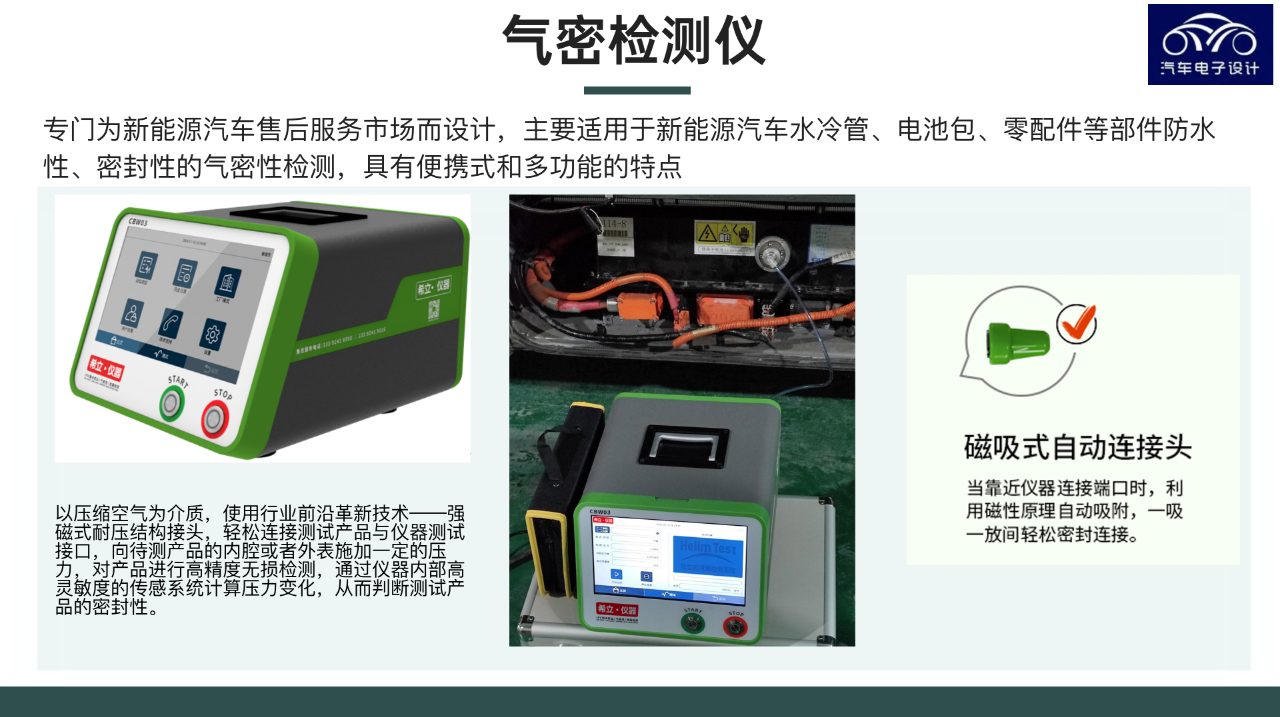
The usual usage of an airtightness tester is to connect the tester to the test component, adjust the air source to the specified pressure through the pressure regulating valve inside the instrument, and then inflate the test component. After a short inflation process, the isolation valve is closed to isolate the test piece from the air source and enter the testing stage. The pressure sensor inside the instrument will monitor the pressure changes of the system. If the pressure drop is higher than a certain value, it means that the airtightness of the battery system is poor. This method can achieve real-time display, data storage, and data traceability functions for the measurement data.
The airtightness tester is specifically designed for the new energy vehicle after-sales service market, and is mainly suitable for the airtightness testing of water-cooled pipes, battery packs, and other components such as zero parts of new energy vehicles. It has the characteristics of portability and multifunctionality.
- Testing principle
Using compressed air as the medium and the use of a strong magnetic pressure-resistant joint structure, the testing product is easily connected to the instrument’s testing interface, a certain pressure is applied to the internal cavity or external surface of the product to carry out high-precision non-destructive testing. The high-sensitivity sensing system inside the instrument calculates the pressure changes, thereby judging the sealing of the tested product.- Accuracy
Full-scale accuracy of 0.02% FS, suitable for applications with higher accuracy requirements and more complex working conditions.
- Intelligent Operation
The detector adopts an intelligent Android 4.42 system with a 1.4GHz CPU, 1GB memory, and 16GB storage with a 10-inch capacitive screen. The operation is more user-friendly, which is also an inevitable trend for instruments to become more intelligent. By mechanically automatically adjusting the pressure input to the target pressure value, the pressure adjustment accuracy is within plus or minus 200Pa, achieving accurate and automatic pressure regulation.
- Magnetic Detection Interface
The interface adopts a stable and strong magnetic structure with a pressure resistance of 600KPa, which can eliminate the instability of various quick connectors and automatically align and easily connect. When the instrument’s air pipe is accidentally tripped, the magnetic head will also detach automatically, eliminating the hidden danger of the instrument or person being tripped.
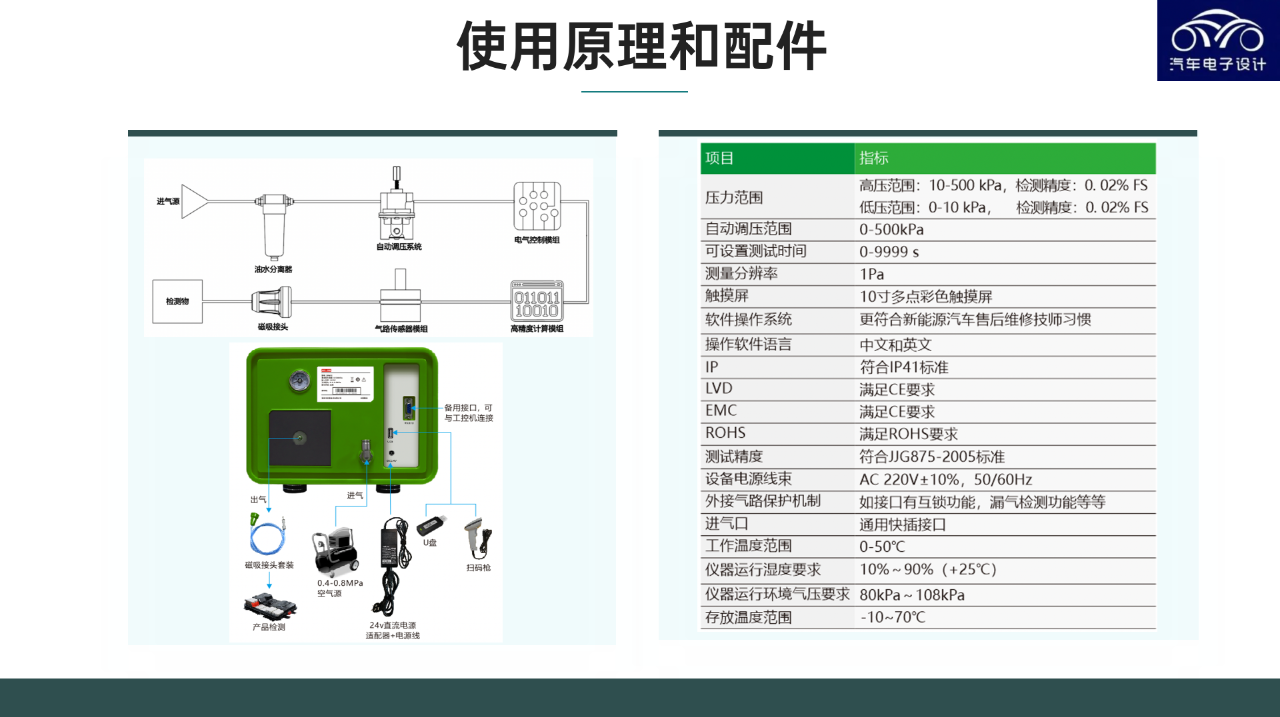
Conclusion: The safe use of electric vehicles requires constant improvement of safety awareness by the public.
Previously, the focus was on the issue of direct battery failure. However, with the increase in the number of new energy vehicles and the longer usage time of vehicles, many indirect failures are also worthy of everyone’s attention. For example, the safety hazard after wading – if the vehicle has been in use for more than 3 years, some seal failures can be quite dangerous.
Therefore, it is meaningful to popularize related testing by regularly maintaining and judging the sealing aging status of the battery system and confirming the airtightness of the battery system.
This article is a translation by ChatGPT of a Chinese report from 42HOW. If you have any questions about it, please email bd@42how.com.
